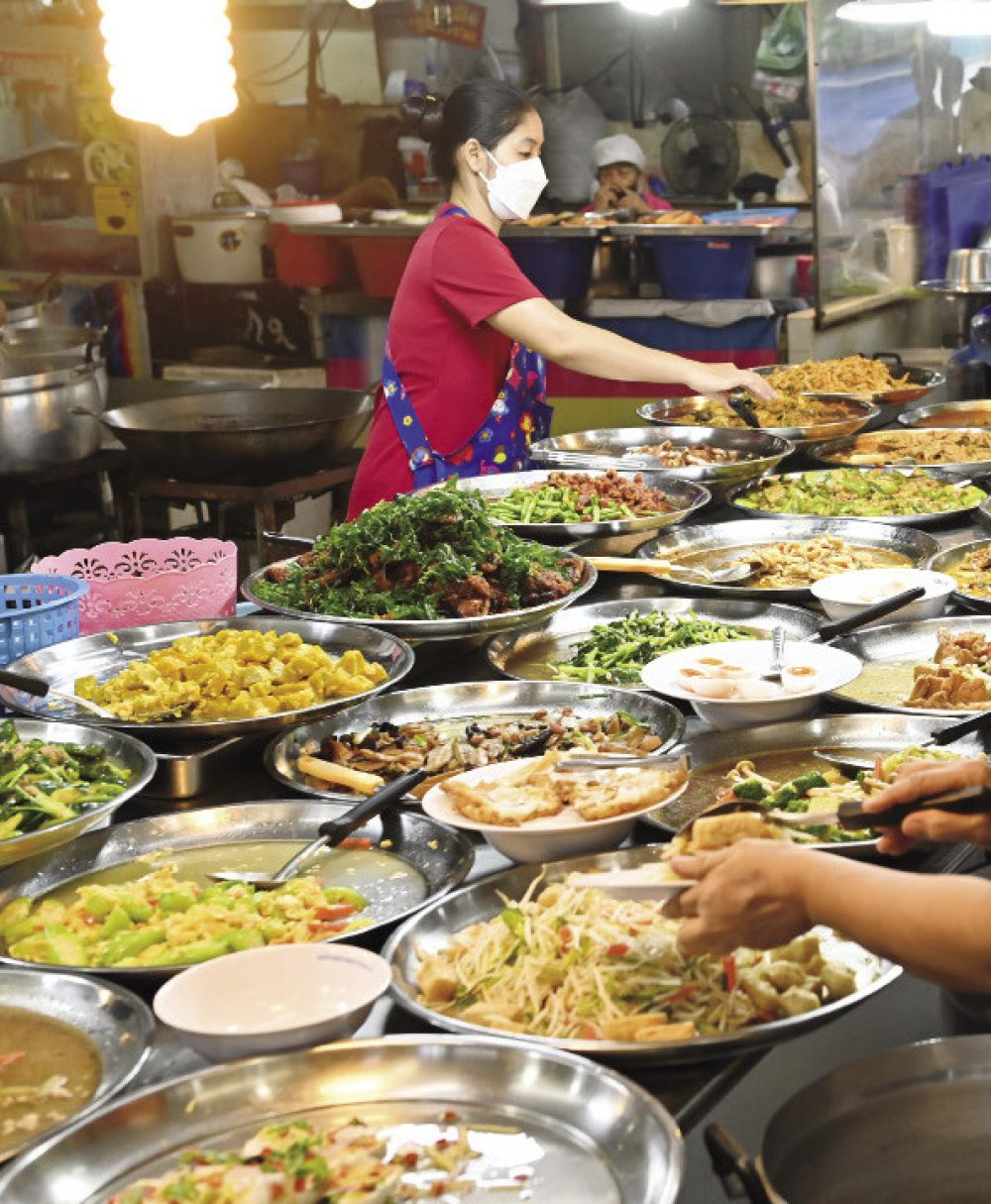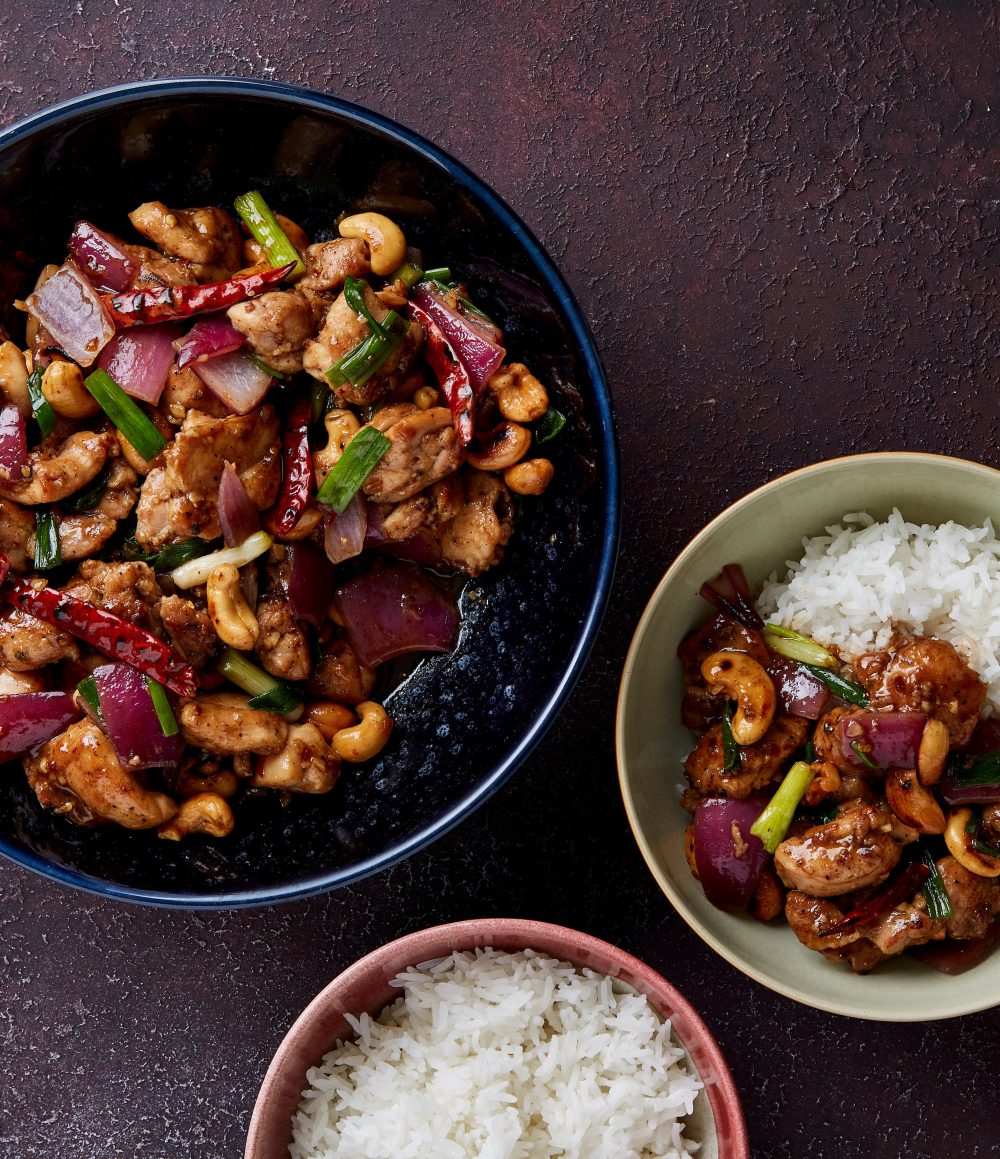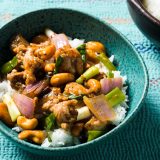
Rawadee Yenchujit is adamant: We cannot eat the meal she has prepared without ice-cold beers. So without waiting for objections, she jumps onto the bicycle parked just outside her kitchen, disappears down the quiet Bangkok lane on which she lives, and minutes later returns with a plastic bag of oversized cans of Singha beer dangling from her handlebars.
“You could eat it with rice,” Yenchujit, a prominent Thai food blogger, says of the mound of gai pad med mamuang himmaphan—or what we know better as cashew chicken—on the table between us. “But all you really need is beer and chopsticks.”
Yenchujit is right. And as we eat, I realize this not only is unlike any cashew chicken I’ve ever eaten, it’s also wildly better. Earlier, she had described its flavor as “infinite,” a term that didn’t make much sense at the time.
Then I tasted its harmony of sweet and spicy, tender and crunchy, fresh and savory, all of it pushing and pulling deliciously in my mouth one bite after another after another. It’s such a cliche to say, but it honestly was one of the best things I’ve ever eaten. That’s when infinite starts to make sense. “It’s infinite,” she says again. “You can’t stop eating it.”
Again, she’s right.
Cashew chicken as we get it in the United States typically is a somewhat goopy, overly sweet and not particularly exciting Chinese American dish consisting of the two namesake ingredients, often tossed with broccoli. In Yenchujit’s kitchen, it becomes an explosion of spicy-savory richness balanced by a gentle sweetness and contrasting textures.
Her version brings Thai sensibilities to the recipe taught to her by her Chinese father, she explains. In part, that means coating the chicken in a flour slurry so it crisps as it cooks. It also means adjusting the seasonings so the finished dish is a bit sweeter, a bit saltier and—depending on your tolerance—a measure spicier.
Her method is simple. Using a flat-bottomed wok, she briefly fries the coated chicken a few pieces at a time, then crisps dried chilies in the same oil, rendering them shatteringly crunchy and taming their heat. Meaty cashews go in and out of the oil next, turning nutty and brown. At that point, she considers the oil spent and refreshes the wok.
Finally, she’s ready to assemble, adding mushrooms, onion, scallions, garlic and a fresh chili to the wok. From here on out, the cooking happens quickly. Within a minute, she returns the chicken and cashews to the pan, plus a sauce made from Thai chili paste—which is more savory than spicy—soy sauce, sesame oil, sugar and oyster sauce.

As soon as the sauce thickens and lightly coats, the dish is done. So many flavors—fresh and pungent scallions, spicy chilies, savory chicken, nutty cashews and sesame oil, plus sweetness from the sugar and oyster sauce.
It’s so much more complex—and compelling—than what I am used to.
And that slurry on the chicken? To be honest, it looked messy and I expected the worst of it, to fry up lumpy and unpleasant or heavy and oil-sodden. Not even close. In fact, I didn’t notice it at all. What I did notice was the beautiful browning and gently crisp texture it left on the chicken. I would use this technique on any chicken I intend to stir-fry.
In the end, it truly did taste like infinite.







